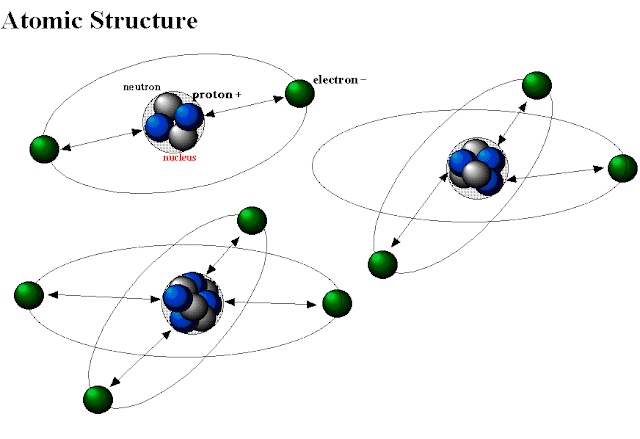*Geometry*
Announcements:
Announcements:
- Finish Geometry Test Today
- CC.9-12.G-CO.9: Prove theorems about lines and angles.
- Inductive and deductive reasoning helps us to understanding geometric principles.
- Attendance
- Lunch Count
- Chapter 3 Pre-Quiz
- Correct Chapter 3 Pre Quiz
- Review Vocabulary
- Class Time for Homework
Homework:
- Complete Page 148-150 #'s 14-40
**Chemistry**
Announcements:
- Chromatography Lab due Tomorrow.
- Chapter 2 Quiz on Monday
- Quiz will be multiple choice covering the following topics:
- Subatomic Particles (but not quarks)
- Names
- Characteristics
- Atomic Number
- Definition
- Mass Number
- Isotopes
- Ions
- Atomic Mass
- EALR4.9-11.PS2A: Atoms are composed of protons, neutrons, and electrons. The nucleus of an atom take up very little of the atom's volume but makes up almost all of the mass. The nucleus contains protons and neutrons, which are much more massive than the electrons surrounding the nucleus. Protons have a positive charge, electrons have a negative charge, and neutrons have no charge.
- EALR4.9-11.PS2H: Solutions are mixtures in which particles of one substance are evenly distributed through another substance. Liquids are limited in the amount of dissolved solid or gas that they can contain. Aqueous solutions can be described by relative quantities of the dissolved substances and acidity or alkalinity (pH).
Big Idea:
- Mixtures can be separated by physical means: Chromotagraphy is the physical separation of a liquid mixture.
- Attendance
- Atomic Model: BrainPop Video
- Atoms: BrainPop Video
- Isotopes: BrainPop Video
- Ions: BrainPop Video
- Review Chapter 2 Content:
- Subatomic Particles (but not quarks)
- Names
- Characteristics
- Atomic Number
- Definition
- Mass Number
- Isotopes
- Ions
- Atomic Mass
- Classwork: Read Chapter 2
- Complete Review Exercises Page 57 #'s 1-18.
Homework:
- Finish laboratory / laboratory report. (Due Thursday)
- Read Chapter 2 / Prepare for Quiz Monday
- Study for test.
***Biology***
- EALR 4.9-11.LS1D: The cell is surrounded by a membrane that separates the interior of the cell from the outside world and determines which substances may enter and which may leave.
- EALR 4.9-11.LS1C: Cells contain specialized parts for determining essential functions such as regulation of cellular activities, energy capture and release, formation of proteins, waste disposal, the transfer of information, and movement.
Big Idea(s):
- Cells are the smallest unit of a living organism. Within cells are the essential parts for photosynthesis and cellular respiration.
- Attendance
- Finish: Cell Structure Rap:
- Reading: Chapter 22: Section 2
- Reading: Rader's Biology-4-Kids: Cell Structure
- Create-A-Test Assignment
- Design a 30 question multiple-choice test about cell structure.
- Each multiple-choice question must have at least 4 answers
- The test should cover the following content:
- Chapter 22, Section 1
- Chapter 22, Section 2
- Rader's Biology-4-Kids: Cell Structure
- Each test should include at LEAST TWO diagrams of a cell. These diagrams should be part of a question or questions.
- Due: October 29th
Homework:
- Read: Rader's Biology-4-Kids:
- Read: Chapter 22, Section 2
- Create-A-Test Assignment
- Test Today
- EALR 6-8.LS3A: <State Standard for Evolution>
- KCS: Students will know that there is scientific evidence which refutes evolutionary theory and suggests an alternate method of creation is possible.
- KCS: Students will be able to distinguish between scientific facts and interpretation of facts.
- KCS: Students will be able to identify scientific facts and give multiple explanations for the same set of facts.
- KCS: Students will be able to identify what a 'Worldview' is and how one's worldview influences their thought process.
Big Idea:
- There are multiple facts which can be interpreted differently, either in favor of or against evolution.
- The task of the critical Christian mind is to examine evidence carefully and weigh interpretation against biblical truth.
Class Outline:
- Attendance
- Collect Quiz Signatures
- Practice Test for Tomorrow
Homework:
- Quiz Signatures: 'Classifying and Categorizing' Quiz
****Trigonometry****
- CCSS-GSRT.1
- Understand that by similarity, side ratios in right triangles are properties of the angles in the triangle, leading to definitions of trigonometric ratios for acute triangles
- CCSS-GSRT.6
- Understand that by similarity, side ratios in right triangles are properties of the angles in the triangles, leading to definitions of trigonometric ratios.
- CCSS-GSRT.7
- Explain and use the relationship between sine and cosine of complementary angles.
- CSS-GSRT.8
- Use trigonometric ratios and the Pythagorean Theorem to solve right triangles in applied problems.
Big Idea:
- Radians are the standard measure of angle in many areas of mathematics and engineering.
- The Unit Circle is a standard circle used in trigonometric functions.
Class Outline:
- Attendance
- Introduce Radians
- Introduce Unit Circle
- Begin Classwork:
- PACE 1134 pages 11-12
Homework:
- Finish PACE 1134 pages 11-12

No comments:
Post a Comment